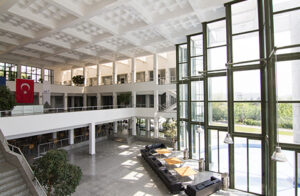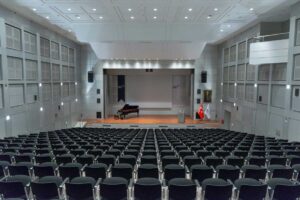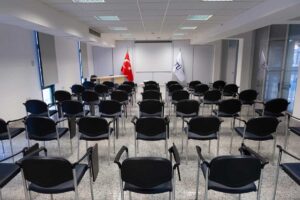ITU AYAZAGA CAMPUS
Suleyman Demirel Arts and Conference Center
Besides the improvements on education and research through redevelopment of the academic and administrative departments and research institutes in line with the global changes, Istanbul Technical University established new places and areas in order to accommodate a variety of cultural and art activities through national and international conferences, symposiums, seminars and organizations.
Several multi–purpose centers that can house art exhibits, receptions, concerts are located in Ayazaga Campus.
TRANSPORTATION
From Taksim (City Center) to ITU Maslak Campus:
Take the M2 metro line from Taksim station to ITU Ayazaga station toward Haciosman direction. Eighth station is ITU (Istanbul Technical University) Ayazaga station. The travel takes about 15-20 minutes from Taksim station.
You can also use Taxis for transportation. You should tell the driver to take you to “Istanbul Teknik Universitesi, Insaat Fakultesi, Maslak”. It will cost about 350 Turkish Lira (approx. 10 Euros).
From Sultanahmet to ITU Maslak Campus:
Take the T1 city tramway from Sultanahmet station towards the direction of Kabatas and get off the tramway at the stop “Kabatas” (Last station in this direction). At this stop, you will see the F1 Finikular line. Take the F1 line (this line is only one station long) to arrive “Taksim”. At the “Taksim station”, transfer to the M2 metro line in the direction of “ITU Ayazaga, Haciosman”. Eighth station is ITU (Istanbul Technical University) Ayazaga station. The journey will take about 50 minutes in total.
You can also use Taxis for transportation. You should tell the driver to ltake you to “Istanbul Teknik Universitesi, Insaat Fakultesi, Maslak”. It will cost about 550 Turkish Lira (approx. 15 Euros).
From Airport to ITU Maslak Campus:
How to reach from Istanbul Airport:
Havaist Airport Shuttle: (HVİST-14) to 4.Levent. From 4. Levent transfer to M2 metro line.
İETT buses: H8 to Hacıosman. From Hacıosman transfer to M2 metro line.
Taxi or rent a car services are also available from the airport.
How to reach from Sabiha Gökçen Airport:
Havabus Airport Shuttle: Take Havabus to Taksim. From taksim transfer to M2 metro line.
İETT buses: E-3 to 4. Levent Metro. From 4. Levent transfer to M2 metro line.
Taxi or rent a car services are also available from the airport.
You can also use Taxis for transportation. You should tell the driver to take you to “Istanbul Teknik Universitesi, Insaat Fakultesi, Maslak”. It will cost about 900 Turkish Lira (approx. 25 Euros).
From Airport to Taksim or Sultanahmet:
The approximate taxi for from Ataturk Airport to Taksim and ITU Ayazaga Campus are listed below:
Istanbul Airport to ITU Ayazaga Campus – 650 TL (18-20 Euros)
Istanbul Airport to Taksim – 650 TL (15-18 Euros)
You can also use Havatas Shuttle Services from Ataturk Airport to arrive at Taksim. Daily shuttle schedule and price information can be obtained from the https://www.havabus.com/.
LOCAL TRANSPORTATION
Public transport in Istanbul comprises a bus network, various rail systems, funiculars, and maritime services to serve the more than 16 million inhabitants of the city spread over an area of 5712 km².
Public transport is cheap and improving all the time, thanks to a municipal campaign to defeat the city’s chronic traffic problem. The result is reinforcement to the entire transport infrastructure: extensions to metro and tram lines, new bypasses and underpasses, new sea bus routes and funiculars are all under way or completed, and a trans-Bosphorus tunnel (Marmaray) is now under construction. But for the time being, Istanbul endures gridlock along major arteries.
Buses are useful for heading up the Bosphorus coast to Ortaköy, Arnavutköy, Bebek and beyond, while trips to the districts of Üsküdar and Kadıköy on the Asian shore are best undertaken by ferry or sea bus. The easiest way to get to shopping and business districts in Nişantaşı, Teşvikye, Etiler and Levent is via the new metro line that runs north from Taksim.
The informative website of the IETT, the local transport authority, has an excellent English version that includes maps and timetables.
The new metro and tram systems provide a comfortable and efficient alternative to clogged roads and crowded buses. However, coverage currently remains scant. At present, the metro runs from Taksim north to 4th Levent, stopping at Osmanbey, Şişli, Gayrettepe and Levent. Extensions slated for completion in 2008 will take the line south of Taksim to the sea bus jetty at Yenikapı and north as far as Maslak.
Another option is the ‘light metro’, which connects Aksaray (west of the Grand Bazaar) to the Esenler bus terminal and on to the airport.
The city’s only modern tram runs from Zeytinburnu via Aksaray to Sultanahmet and terminates at Eminönü by the Galata Bridge. This is a useful service for visitors, linking the Grand Bazaar, Haghia Sophia, Sultanahmet Mosque, Topkapı Palace, the Egyptian Bazaar and the Golden Horn. You can also use the tram to visit the city walls. Buy tokens in advance from kiosks at tram stops and feed them into the automatic barriers outside the platform. A single trip on the tram costs 9,9 TL irrespective of your destination. The service runs from around 6am-midnight.
ISTANBUL
About Istanbul
İstanbul, the bustling metropolis of Türkiye, is a city full of charm, where the past goes hand in hand with the present and every step brings to light a relic of times gone by. At the crossroads of two continents – Europe and Asia – this spectacular city has absorbed the best of both worlds.With its beautiful historic landmarks, quintessential cuisine, vibrant nightlife, festivals of art and music, celebration of faith, labyrinths of marketplaces and shopping arcades, the beating heart of İstanbul, and the soul of Bosphorus under the watchful eye of the Maiden’s Tower is a traveller’s dream.
Discover the wonders of Istanbul, a city that offers a wealth of experiences for all. From indulging in the flavors of Gastrocity, to immersing yourself in its rich art and culture, to exploring its vibrant shopping scene, to finding spiritual solace in its historic sites of faith and beyond, Istanbul has something for everyone.
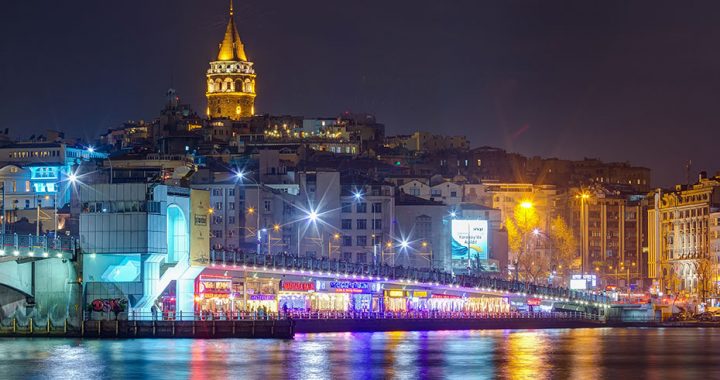
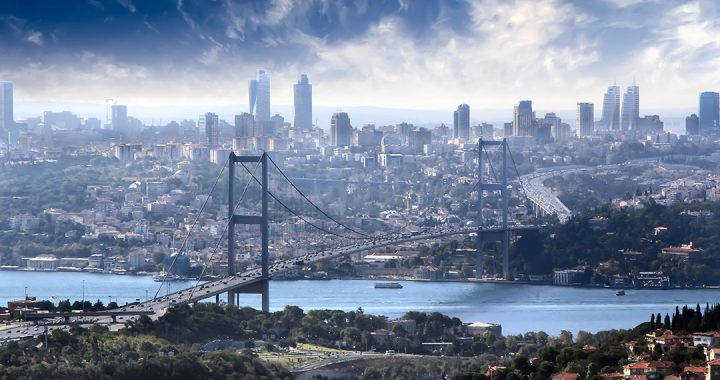
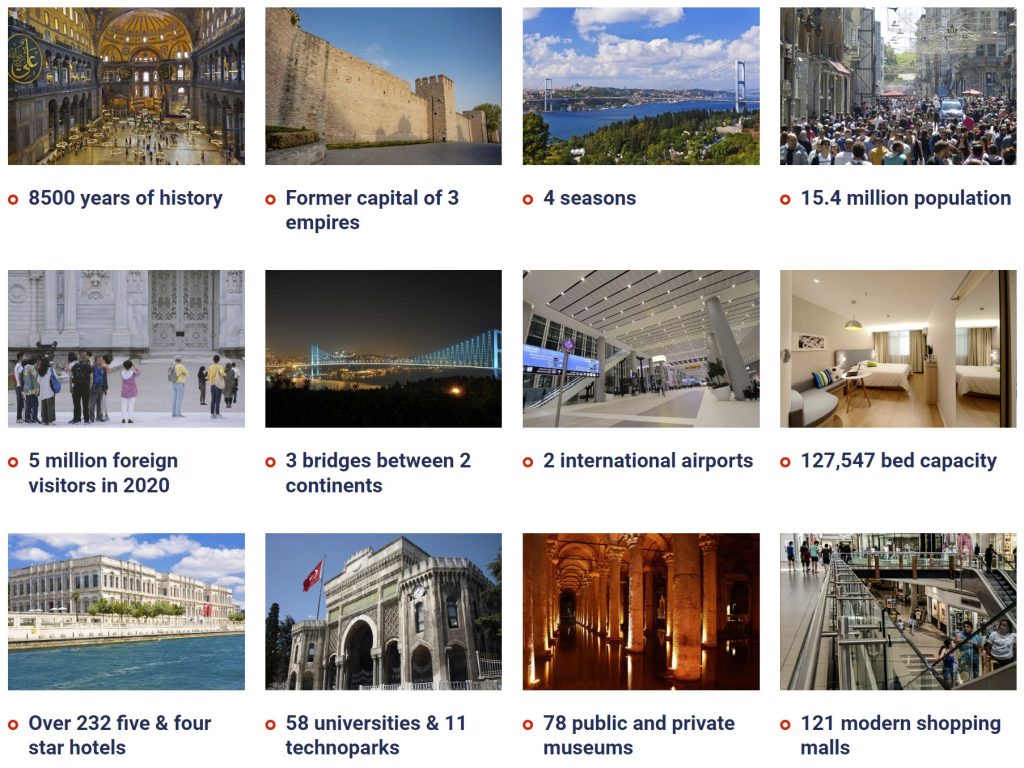
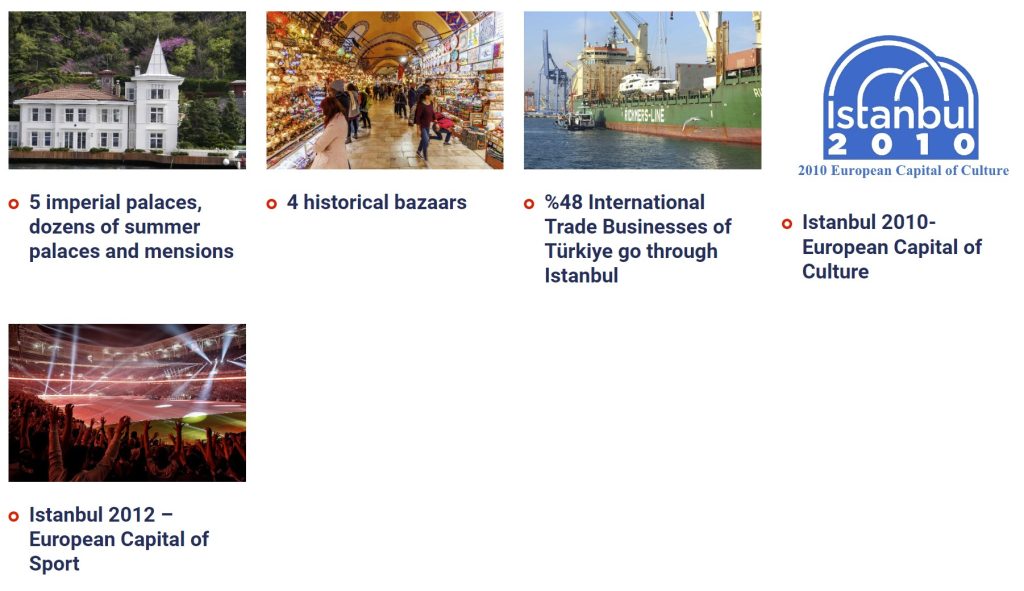
Useful Tips
Language
The official language is Turkish. English is usually spoken in touristic areas.
Time zone
Turkey time (TRT) zone varies within UTC/GMT+3h according to the region. In August CET+1, GMT+2.
Voltage
Electrical system in Turkey operates on 220 V and the standard frequency is 50 Hz. The power plugs and sockets are of type F, thus you will need a voltage converter and plug adapter to use U.S. appliances.
Telephone Calls
The dialling code of Turkey is 90. Every cities have different codes. To make international calls, you need to dial country code, city code, and the remaining numbers.
Currency
Local currency is Turkish lira (TRY). Dollars and Euros can be easily exchanged in hotels, authorized banks, and exchange offices. International debt and credit cards (Visa and Master Card) are accepted in most places.
Tax
Taxes are included in the labels.
